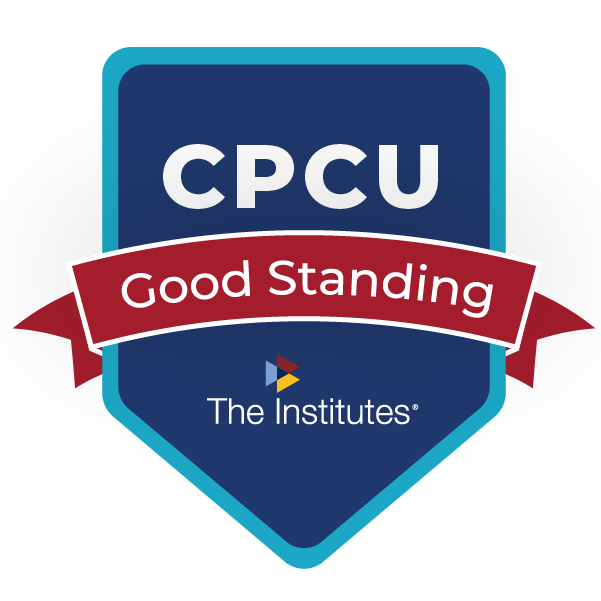2015 Interest Rates Survey
September 28, 2015 – If you’ve been sitting around waiting for interest rates to rise in a meaningful way sometime soon, a recent report from the Executive Office of the President of the United States might give you an unhappy pause.
Not that a reading of “Long-Term Interest Rates: A Survey,” published July, 2015, predicts anything catastrophic. It simply lays bare a few realities that many people have spent a lot of time trying hard not to accept.
Briefly summarized, the survey reveals:
Rates have been on a long, steady decline for more than a generation.
Nobody really saw this coming.
It’s happening everywhere, not just the United States.
This could be permanent (or close to it).
Experts were wrong before and they’re probably going to be wrong again.
Rates probably aren’t heading too far north anytime soon.
Since a projection of long term interest rates is an important component in developing any Administration’s Presidential budget, this sobering news underscores the importance of setting realistic expectations.
Speaking of Realistic Expectations
 If you’ve been resisting making long term financial commitments with your money out of fear you’d end up with some kind of buyer’s remorse if rates improve dramatically, maybe this survey will reduce your anxiety.
If you’ve been resisting making long term financial commitments with your money out of fear you’d end up with some kind of buyer’s remorse if rates improve dramatically, maybe this survey will reduce your anxiety.
True, it’s not an ultra-rosy projection; however, maybe by tempering your expectations, you can move forward with confidence that you’ll be locking into something that is as good as you can get in the near term.
Structured settlements, with the added benefit of paying cash flows that are income tax-free (physical injury) or tax-deferred (non-physical injury, including attorney fees), remain a preferred settlement alternative despite the persistent “low” interest rate cautions.
Same with retirement annuities. Once you accept that security backed instruments are likely to remain close to status quo for much of the next generation, your incentive to hoard cash lessens.
Nobody wants to buy a TV set the day before it goes on sale. Maybe knowing there won’t be any “sale” on interest rates in the foreseeable future will allow you to move forward more confidently to secure your own future.
Posted: September 28, 2015 | Category: Articles, Blog, Retirement, Structured Settlements | Comments Off on 2015 Interest Rates Survey
When You’re Sixty-Four
 September 14, 2015 – Even some of the staunchest Beatles fans are surprised to learn that one catchy tune from the Sgt. Pepper’s Lonely Hearts Club Band album about reaching a certain age was one of the first songs Paul McCartney ever wrote, by some accounts as early as age 16 when the band was still calling itself The Quarrymen.
September 14, 2015 – Even some of the staunchest Beatles fans are surprised to learn that one catchy tune from the Sgt. Pepper’s Lonely Hearts Club Band album about reaching a certain age was one of the first songs Paul McCartney ever wrote, by some accounts as early as age 16 when the band was still calling itself The Quarrymen.
Give “the cute Beatle” points for looking almost fifty years into the future to ponder love, life and, even if he was doing so unintentionally, joint life expectancy.
Today, married couples probably don’t think enough about joint life expectancy but if they want to make sure their retirement assets last as long as they do, they should.
Fortunately, one “band” that calls itself the Society of Actuaries (SOA) thinks about this kind of thing a lot. These studious lads (and lasses) may never have charted any singles but the work they do is as vital to life as music, if not more so.
In its Phase 1 (of a four-phase project) Baseline July, 2015 research newsletter on “Optimal Retirement Income Solutions in DC Plans,” the SOA authors analyze various retirement income generators (RIGs) with the goal of evaluating the pros and cons of each method to find the optimum solution for ensuring steady cash flow for life.
(Full Disclosure: One of the authors, Dr. Wade Pfau, was one of my professors during my Retirement Income Certified Professional® studies through The American College)
Quotable Highlights
This report is YET ANOTHER in a series of studies we keep finding that points to the advantage of life annuities to meet one’s future income needs.
Here are a few of the highlights we especially liked with our own emphasis added:
“RIGs that pool longevity risk (annuities) provide higher expected lifetime retirement income than investing approaches that self-fund longevity risk.” (p. 8)
“An effective compromise may be retirement income solutions that dedicate a portion of savings to annuities and remaining assets to investing solutions to realize the advantages of both.” (p. 9)
(NOTE: Check out some of our recent newsletters and blog posts. We’ve been advocating this approach for years.)
“Traditional annuities produce higher expected average retirement income than SWP (Standard Withdrawal Plan) strategies due to longevity pooling.” (p. 12)
This last one is worth analyzing a bit further.
The classic “four percent” draw down approach (a common SWP where retirement assets are invested in a mix of stocks and bonds and retirees withdraw four percent of the principal each year to live on hoping what remains will earn enough to allow the money to last a lifetime) has recently been called into question.
So much so than this SOA paper didn’t even consider this approach as an option since prior research “showed this method failed (savings were exhausted) in unfavorable investment scenarios.” (p.14)
Translation: The four percent thing works great when it works. But it doesn’t always work.
Saving the best part of the report for last, it doesn’t get any more straightforward than what the authors concluded about single premium immediate annuities (SPIAs) for a hypothetical sixty-five year old female with $250,000 in retirement assets:
“SPIAs produce highest income with lowest risk” (p. 23)
You’ll Be Older, Too
For married couples, the case for annuities is even more compelling.
Everyone has a statistical probability of living to a certain age. But when that same person marries, the chance that one of them will live beyond their individual life expectancy increases by a significant factor.
NOTE: This calculus also extends to same-sex married couples by the way though it is unknown to what extent outcomes might vary. Additional research is needed.
If continuation of cash flow to a surviving spouse is important to ANY married couple, placing value on these statistical probabilities should be a top priority.
Here’s a quick look at how this plays out for a sixty-four year old married (male, female) couple courtesy of our bean-counting friends at the SOA (individual chances in parentheses):
18% chance one of them will live to age 95 (Man: 6%, Woman: 18%)
If want to see what YOUR OWN chances of living to a certain age will be, Vanguard has a nifty interactive “Plan for a long retirement” tool you might like. It’s a fun (and possibly frightening) exercise.
So whether you’re trying to decide what to do with an anticipated personal injury settlement, a larger-than-usual attorney fee or the current 401(k) balance you’ve managed to accumulate during your working life, I hope this information on life expectancy has given you something to think about.
Posted: September 14, 2015 | Category: Articles, Blog, Newsletter, Retirement, Structured Sales, Structured Settlements | Comments Off on When You’re Sixty-Four
EBRI Conclusion: Annuities = Good
September 10, 2015 – Despite ongoing efforts by many in the financial planning community-at-large to downplay the importance of annuities in helping people address their retirement financing challenges, unbiased research keeps surfacing, leading astute retirees and retirees-to-be to the exact opposite conclusion:
Retirement annuities can be very, very good for you!
Today, I’m pleased to share the following article from the August, 2015 issue of EBRI Notes, a publication of the Employee Benefit Research Institute (EBRI):
“How Much Can Qualifying Longevity Annuity Contracts Improve Retirement Security?”
 The article discusses modeling techniques used to assess the retirement readiness and ultimately security for Baby Boomers and Gen Xers. In light of the ongoing perception that “interest rates are too low” for annuities, we found this particular finding noteworthy:
The article discusses modeling techniques used to assess the retirement readiness and ultimately security for Baby Boomers and Gen Xers. In light of the ongoing perception that “interest rates are too low” for annuities, we found this particular finding noteworthy:
“. . . even at today’s historically low interest rates, the transfer of longevity risk provides a significant increase in retirement readiness . . .”
EBRI is a nonprofit, nonpartisan organization which exists to provide “credible, reliable, and objective research, data and analysis” and counts among its members a cross section of some of the most recognizable names in the American financial, investment, employment, education, legal, accounting, insurance and labor organization landscape.
One of the worst things that can happen to a person after a lifetime of working and saving for retirement is to find themselves in a position where they run out of money.
It’s an individual problem, to be sure.
But it’s also a problem for society as a whole hence the interest in the subject by EBRI.
Annuities, especially longevity annuities, help offset the risk of running out of money at an advanced age in one of the most cost-efficient manners possible. The mortality risk transfer that occurs when people buy annuities en masse simply cannot be replicated as effectively by individuals following traditional investing strategies.
Traditional investing and annuity ownership need not be mutually exclusive by the way. For most people, an ideal retirement plan would likely include elements of both with the only variable being a matter of percentage allocation to each discipline.
Image courtesy of stockimages at FreeDigitalPhotos.net
Posted: September 10, 2015 | Category: Articles, Blog, Retirement, Structured Settlements | Comments Off on EBRI Conclusion: Annuities = Good
Structured Settlement Usage Improves in 2015
September 3, 2015 – Of the nine categories of fixed annuities tracked by LIMRA Secure Retirement Institute, only one has shown a positive trend over 2014: Structured Settlements.
An estimated 46.2 billion dollars’ worth of fixed annuity contracts were issued through the half-way point of 2015 and the data reveal that structured settlements are up 8% adding $200,000,000 over the previous year’s activity.
LIMRA Secure Retirement Institute estimates place structured settlement activity at $2.8 billion through June of 2015.
While our firm can’t take full responsibility for this improvement (we’re up about 41% YTD over 2014), I’m proud to say the decisions our clients are making have contributed to this positive trend.
Tax-advantaged, guaranteed structured settlement payments exist to help those challenged by the aftereffects of a personal injury settlement.
Many of them can no longer return to their regular careers.
Often they’re dealing with the severe emotional and financial devastation that accompanies the death of a family member.
Others face the uncertainty of ongoing medical and support needs.
Some seek tax efficiency impossible to achieve elsewhere.
In our view, it only makes sense those who require stability choose safety and security over uncertainty and volatility.
While structured settlement annuity activity represents only about 6.1 percent of the total fixed annuity market, it’s perhaps the most essential percentage since these annuities are funded not with disposable income dollars but rather dollars intended restore individuals to their pre-accident condition.
Structured settlements have been helping people for going on half a century and we’re proud to provide such a valuable life stabilizing service to those who need it most.
Image courtesy of Stuart Miles at FreeDigitalPhotos.net
Posted: September 3, 2015 | Category: Articles, Blog, Retirement, Structured Settlements | Comments Off on Structured Settlement Usage Improves in 2015
Mastering Structured Settlements
August 18, 2015 – In furtherance of our ongoing commitment to do our absolute best to help clients navigate the complex and often daunting personal injury pre-and-post-settlement resolution process, I’m proud to announce today that I am officially among the first in the country who can formally lay claim to the title:
Master’s Certified Structured Settlement Consultant
First Graduating Class
Last fall, I was part of the inaugural class of structured settlement industry professionals who began formal studies on the beautiful campus of The University of Notre Dame as part of the National Structured Settlements Trade Association’s (NSSTA) advanced structured settlement certification offering.
The Master’s Certified Structured Settlement Consultant (MSSC) designation, developed in cooperation with Notre Dame’s prestigious Mendoza College of Business, builds on the Certified Structured Settlement Consultant (CSSC) designation NSSTA initiated more than two decades ago, a designation I earned in 1995.
The MSSC curriculum included a host of topics designed to enhance students’ understanding of the issues facing our industry that we may better serve our clients. I highlighted some of the faculty and subject matter covered in my Master Class Highlights blog post last October.
The capstone of the learning experience was the submission of a peer-reviewed research paper. For my thesis, I chose the wordy yet unambiguously titled . . .
“Non-Physical Injury Structured Settlements:
A Solution To The Fairness Imbalance Created When Taxable Damage Personal Injury Claims Settle For Cash Lump Sums.”
My research paper is currently being considered for publication in an industry periodical so I’m not linking it to my website just yet; however, if you are interested in reading, I’m more than happy to share. Just let me know and I’ll gladly send you a copy.
While the rest of America prepares for the start of another school year, I’m happy to have completed my recent educational undertaking and look forward to sharing and applying what I’ve learned the next time I can help someone.
Image courtesy of Stuart Miles at FreeDigitalPhotos.net
Posted: August 18, 2015 | Category: Articles, Blog, Structured Settlements | Comments Off on Mastering Structured Settlements
Structuring for Life (Insurance)
July 29, 2015 – Investors call it leverage. Taking (or borrowing) money from one source in an effort to multiply gains or address other financial objectives.
Outside of the stock market, leverage need not be motivated by desire for profit, however.
Sometimes it’s just about balance.
Take the following hypothetical example based on a true story from our archives where a client exercised her own bit of leverage to add significant peace of mind for her family when she was in the midst of settling her personal injury claim.
The Background
“Charlotte” was receiving a moderately sized insurance settlement from a personal injury claim.
During my needs assessment discussion with her, she commented several times how worried she was that her 41-year old husband “Geoff”, who was the family’s only source of income since the birth of their twins, was currently without any meaningful life insurance.
Geoff and Charlotte planned for her to be a stay-at-home mom for the foreseeable future and wanted to make sure she would be able to provide for her children should something unthinkable happen to Geoff.
So She Used Leverage:
An affordable $1,000,000 20-Year Term Life insurance policy funded with a structured settlement.
The Easy Solution
I was able to get a $1,000,000 Term Life policy for Geoff, a healthy non-smoker, from a major carrier rated A+ by A.M. Best for a cost of $1,459.00 per year.
Then, as part of her overall structured settlement solution, I secured a structured settlement for her, also from a carrier rated A+ by A.M. Best, that will guarantee $1,459 a year (the cost of the life insurance) for the next 20 years at a cost of just under $24,000.00.
In this instance, $24,000 represented less than 10% of her overall net recovery from the settlement but the life insurance deficit was probably consuming 90% of her worry.
Such a small amount of money to buy such a large amount of protection.
So this solution was not only easy, it met the need. She’s using tax-free structured settlement income to fund a life insurance policy which, if it’s ever paid out, will do so in dollars that are also tax-free.
Now THAT’s leverage.
That’s balance.
That’s just smart!
Image courtesy of AKARAKINGDOMS at FreeDigitalPhotos.net
Posted: July 29, 2015 | Category: Articles, Blog, Structured Settlements | Comments Off on Structuring for Life (Insurance)
MetLife Ad in Trial Magazine
July 8, 2015 – Just wanted to take a moment to pass along the attached advertisement appearing in this month’s issue of Trial which we have been authorized to share with our clients.
MetLife is one of the excellent life markets we are proud to represent and we are appreciative of their efforts to reach out to the plaintiff bar on the important topic of structured settlements.
A similar ad will appear in an upcoming defense oriented periodical since structured settlements are a common tool used by ALL parties involved in the litigation resolution process.
For those of you planning to attend the AAJ Annual Conference in Montreal this weekend, be sure to stop by to say hello to our friends at MetLife. They’ll appreciate hearing about any structured settlement success stories you’d care to share.
Thank you MetLife for your commitment to the structured settlements industry! Amusez-vous à Montréal!
Posted: July 8, 2015 | Category: Articles, Blog, Structured Settlements | Comments Off on MetLife Ad in Trial Magazine
Special Needs Trust Fairness Act of 2015
June 25, 2015 – Please join us in urging Congress to pass Senate Bill 349, the “Special Needs Trust Fairness Act of 2015.”
The bill, introduced by Sen. Chuck Grassley (R-IA) earlier this year, is supported by the National Structured Settlements Trade Association (NSSTA), the Special Needs Alliance, the National Academy of Elder Law Attorneys, Easter Seals and The Arc.
What a difference a word can make.
The bill simply seeks to modify existing law by adding “the individual” to language identifying those who are capable of establishing a Special Needs Trust (SNT). When the Omnibus Budget Reconciliation Act of 1993 was passed, a technical error resulted in excluding individuals from those able to create their own trust.
While there are certainly situations where disabled individuals cannot create their own trust, allowing those who are fully capable eliminates an unnecessary complexity to the process of establishing a Special Needs Trust.
Our firm is frequently involved in coordinating benefits with Special Needs Trust beneficiaries who can benefit from the power of Special Needs Trusts combined with structured settlement benefits.
We applaud Sem. Grassley for his ongoing leadership and look forward to this bill becoming law.
Image courtesy of Vichaya Kiatying-Angsulee at FreeDigitalPhotos.net.
Posted: June 24, 2015 | Category: Articles, Blog, Structured Settlements | Comments Off on Special Needs Trust Fairness Act of 2015
Best Retirement Income Choice
June 18, 2015 – So you’ve saved a bunch of money during your working life and are finally getting serious about making some decisions about how to make sure this gob of money lasts for as long as you do.
Maybe you’re lucky and worked for an employer that still offered a pension.
Social Security or its public employee equivalent or both will cover some of your future needs.
But in addition, you have this lifetime accumulated mass (larger for some, smaller for others) of dollars you need to stretch out over your golden years.
What do you do with your money?
Who can you believe?
If you put any stock into recent research by someone qualified to speak intelligently on the topic, you might want to read the latest coming out of the Mercatus Center at George Mason University.
Government Policy on Distribution Methods in Individual Accounts for Retirees: Life Income Annuities and Withdrawal Rules is an excellent Working Paper, authored by visiting scholar Mark J. Warshawsky, PhD.
The paper gives additional support to the long-standing (but frequently maligned by the financial planning community) notion that many people can benefit by choosing life annuities to meet some portion of their overall retirement income needs.
“The life annuity is indeed an effective instrument for distributing retirement assets to produce lifetime income; it functions generally somewhat better than the withdrawal rules in widespread use.”
The paper itself is chock full of supportable reasons why it might make sense for you to give annuities serious consideration for some of your retirement funds.
Assuming you’re not a policy wonk inclined to read the 48 page findings cover to cover, this summary by RealDealRetirement.com editor Walter Updegrave which appeared in yesterday’s online edition of CNNMoney gives a good common sense perspective:
“Which Generates More Retirement Income – Annuities or Portfolio Withdrawals?”
For the record, we’re completely on board with the “don’t put all your (nest) eggs in one basket” approach to retirement income planning.
As such, we just think that locking up some portion of your money to make sure it lasts for the rest of your life regardless of how long you live makes too much retirement sense to overlook.
It’s always reassuring when we come across supportable information that reinforces something we’ve been telling clients for years.
Annuities, whether it be through a structured settlement, structured attorney fee, structured sale or simple retirement fund rollover, just seem to simplify the whole idea of taking care of your future needs for so many people.
Happy Annuitizing!
Image courtesy of Stuart Miles at FreeDigitalPhotos.net
Posted: June 18, 2015 | Category: Articles, Blog, Retirement, Structured Settlements | Comments Off on Best Retirement Income Choice
The Taylor Swift – Structured Settlement Connection
 May 29, 2015 – Hopefully the hook worked and you’re reading this post to find out what possible connection could exist between superstar recording sensation Taylor Swift and Structured Settlements.
May 29, 2015 – Hopefully the hook worked and you’re reading this post to find out what possible connection could exist between superstar recording sensation Taylor Swift and Structured Settlements.
Truth be told, there are probably about 535 connections and you can find them all in Washington, DC every so often.
It turns out, in this city where consensus among Democrats and Republicans seems rarer than an awards show where Taylor Swift doesn’t walk away with at least one trophy, the two parties have discovered a few areas where common ground is possible irrespective of party allegiance:
Taylor Swift and Structured Settlements
As reported by CNN Senior Digital Correspondent Chris Moody and elsewhere, DC politicians have found a bipartisan interest in this summer’s Taylor Swift concert tour.
Some things are so undeniably good that one’s political party affiliation just doesn’t matter.
Take structured settlements, for instance. Since their inception more than three decades ago, structured settlements have always enjoyed broad bipartisan support throughout both chambers of Congress.
As this joint statement of the American Association of People with Disabilities and the National Structured Settlements Trade Association makes clear, the legislative history of structured settlements is awash with names of some of history’s most distinguished political leaders supporting this great settlement option.
If elections were being held today for someone tasked with bridging divides and uniting the masses, Taylor Swift would easily get my vote. Her unique ability to connect with people of all ages, sizes, shapes and genders makes her the perfect candidate.
In a way, you might even say she’s the personification of a structured settlement!
Disclaimer
To be clear, I have no reason to believe Taylor Swift even knows what a structured settlement is so there really isn’t any direct connection between the two.
Not really.
But with this phenomenal artist’s uncanny and well demonstrated history of showing compassion and concern for those who are suffering, I have to believe she’d be a fan of them if she knew how much they helped people.
Taylor, if you’re reading this, hopefully you can shake, shake, shake off any liberties I’ve taken in riding your coattails. All the best with your upcoming tour and please feel free to reach out if you’re interested in learning more about structured settlements.
I promise to never, ever, ever invoke your name in one of my blog posts again.
(Unless, of course, you want me to)
Image of US Capitol Building courtesy of Vichaya Kiatying-Angsulee at FreeDigitalPhotos.net
Posted: May 29, 2015 | Category: Articles, Blog, Structured Settlements | Comments Off on The Taylor Swift – Structured Settlement Connection






















